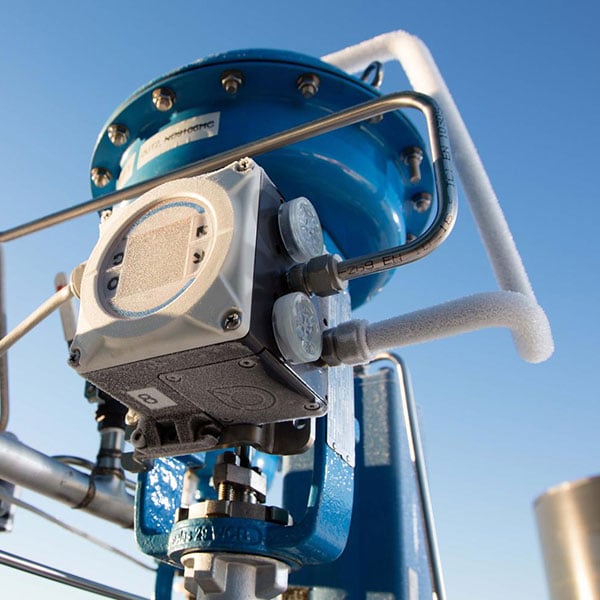Choosing the Right Control Valves: A Guide to Optimal System Efficiency
Choosing the Right Control Valves: A Guide to Optimal System Efficiency
Blog Article
Optimize Building Operations With Premium Automation Controls for Controllers
In the world of contemporary building operations, the integration of premium automation controls for controllers has ended up being a pivotal facet in making sure optimal efficiency and efficiency. The usage of innovative automation technologies offers an advanced method to taking care of building systems, leading to enhanced operational abilities and structured procedures. By using the power of premium automation controls, structures can attain unmatched degrees of power performance, system reliability, and cost-effectiveness. This tactical application not just boosts the general functionality of the infrastructure yet additionally empowers operators with enhanced control and flexibility. The value of these costs controls in optimizing building procedures is undeniable, paving the way for a much more lasting and reliable future in center monitoring.
Enhancing Structure Performance Via Automation Controls
Improving structure effectiveness is critical in today's architecture and layout industry, with automation controls playing a critical function in achieving optimum performance. By incorporating advanced automation manages right into developing systems, engineers and developers can produce smart, energy-efficient frameworks that respond dynamically to altering environmental problems. These controls allow for the smooth tracking and monitoring of various building functions, such as lights, HVAC systems, and protection protocols, causing improved operational effectiveness and cost financial savings.
Automation controls allow real-time information evaluation and changes, guaranteeing that buildings run at peak performance levels while reducing energy waste. Via the use of sensing units, actuators, and systematized control systems, structures can adapt their settings based on occupancy patterns, exterior climate condition, and time of day. This degree of automation not just enhances the convenience and efficiency of building passengers however also adds to sustainability efforts by lowering general power usage and carbon discharges.
Maximizing Energy Savings With Costs Controls
With the assimilation of costs automation regulates right into developing designers, systems and engineers can even more enhance power effectiveness, enhancing the general functional efficiency of frameworks. Additionally, premium controls assist in the coordination of numerous building systems, such as Lighting, shading, and heating and cooling, to operate in harmony in the direction of decreasing power wastage. On the whole, the application of costs automation manages not only lowers energy expenses yet additionally contributes to a much more sustainable and ecologically pleasant built atmosphere.

Improving System Efficiency and Dependability
The assimilation of premium automation controls into building systems enhances functional performance, guaranteeing optimum efficiency and dependability. By using innovative controls, constructing operators can keep track of and readjust different systems in real-time, bring about enhanced efficiency throughout a/c, illumination, security, and other critical structure functions. These controls use anticipating upkeep capabilities, allowing positive identification of possible concerns prior to they rise into pricey problems. Additionally, premium automation controls offer data analytics that use understandings into system efficiency fads, enabling continuous optimization and fine-tuning of procedures. The usage of top notch controls also boosts system reliability by reducing the threat of tools failures and downtime. With attributes like remote monitoring and diagnostics, building managers can deal with concerns quickly, reducing interruptions to constructing procedures. Overall, the unification of costs automation manages elevates system performance and dependability, inevitably adding to an extra lasting and efficient structure atmosphere.
Minimizing Functional Costs With Automation Innovation
The implementation of automation modern technology in structure systems not next just boosts performance and integrity yet also plays a vital function in driving down functional prices. control valves. By leveraging innovative automation controls, developing drivers can optimize power usage, decrease waste, and simplify upkeep processes. Automation innovation allows specific tracking and control of different building systems such as HVAC, protection, and directory lights, resulting in much more reliable procedures. Through the combination of information and sensors analytics, automation systems can recognize inefficiencies and automatically readjust settings to make certain optimum efficiency while lessening power use. In addition, automation technology aids in anticipating maintenance by spotting potential problems early, protecting against pricey repair services and downtime. By streamlining control and automating routine tasks, functional expenses can be substantially decreased, maximizing sources for various other important structure upgrades or investments. Generally, the tactical execution of automation modern technology not only improves operational effectiveness however also adds to long-lasting expense financial savings for building owners and supervisors.
Enhancing Control and Adaptability for Workflow

Additionally, these systems make it possible for seamless combination with various other building administration modern technologies, such as power surveillance systems and protection procedures, developing a thorough ecosystem that simplifies procedures and enhances general performance (control valves). The capability to from another location accessibility and adjust setups additional boosts control and adaptability, permitting speedy responses have a peek here to altering operational requirements. Eventually, investing in premium automation controls not only boosts the day-to-day procedures of a structure yet additionally brings about long-lasting expense financial savings and sustainability benefits
Final Thought
These controls improve effectiveness, maximize energy financial savings, boost system efficiency and reliability, minimize functional prices, and enhance control and versatility for operations. It is crucial for companies to spend in premium automation regulates to attain far better building performance and functional end results.
By harnessing the power of premium automation controls, buildings can achieve unequaled degrees of power effectiveness, system integrity, and cost-effectiveness. Generally, the consolidation of costs automation manages raises system efficiency and reliability, eventually adding to an extra sustainable and reliable structure atmosphere.
Automation technology makes it possible for accurate tracking and control of various building systems such as HVAC, safety and security, and lighting, leading to extra reliable operations. These controls improve efficiency, optimize energy savings, boost system performance and dependability, minimize operational expenses, and boost control and flexibility for procedures. It is crucial for companies to invest in costs automation controls to attain far better building performance and functional outcomes.
Report this page